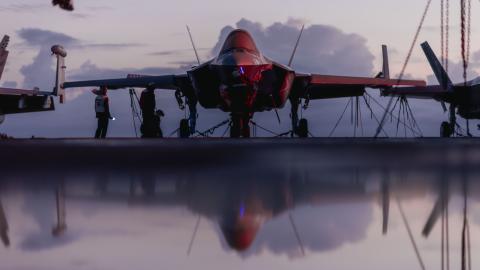As the world crisis grows, with America involved in wars in Ukraine and in the Middle East and possibly facing a major conflict over Taiwan, calls for increasing our defense spending have reached a crescendo. The new National Defense Authorization Act (NDAA) from Congress increases the Pentagon budget to $880 billion—an all-time high in terms of dollars spent. A prominent senator has even urged raising that amount annually to 5% of GDP—which is still barely half of the percentage spent during the Cold War.
However, just as important—or even more important—than what the Pentagon spends, is how it spends it. A Congressionally appointed blue ribbon commission has set on the policy table a list of recommended reforms to bring the Pentagon’s budget system into the 21st century. The battle now begins to implement those changes, changes that could not only mean using defense dollars more wisely and effectively; they could make the difference between victory or defeat in any future war.
The existing Pentagon Planning, Programming, Budgeting, and Execution (PPBE) process governing defense spending dates back to the 1960s. Despite occasional fixes and changes, it’s no longer up to the challenge of meeting today’s rapid technological changes, or the complex challenges posed by China’s and Russia’s militaries, from drones and hypersonics to naval forces and space.
To address this issue, Congress set up its 14-person PPBE Reform Commission in February 2022. After 24 months and more than 140 hours of deliberations, after hearing from more than 1,100 expert witnesses ranging from industry to senior defense officials, the commission released its final report in March (full disclosure: I was involved in drafting and editing that report).
Among the commission’s 28 detailed recommendations, four stand out.
The first is replacing the existing PPBE Process with a new Defense Resourcing System (DRS), consisting of the four discreet stages of the old system with three interlocking stages. The first stage will be focused on meeting strategic goals; the second on allocating resources, including dollars, to meet those goals; the third on carrying through on execution. The goal is to ensure that Pentagon spending aligns with current overall strategic goals, e.g., confronting China’s growing naval threat, and to gain more efficient performance at all levels of the allocation process.
The second recommendation is finding ways to strengthen the Pentagon’s analytic processes and measurement metrics, for a more accurate system of adjusting resource allocation, i.e., how much money is needed as well as how it’s spent, to fit with overall strategy.
The third is transforming the budget’s overall structure, by creating a seamless top-down flow from Service/Component and Major Capability Activity Area, e.g., UAV’s or submarines or Space Systems, to individual systems and programs throughout their life cycle. This will help to make sure budgets stay on track with important strategic as well as technological changes, while also giving a clearer picture to Congress and the public of how DoD money is spent, and why.
The fourth involves consolidating the different budget activities (BA’s) that fall under the heading of Research, Development, Test and Evaluation (RDT&E). Today the division of these activities into separate discreet boxes hampers DoD’s ability to keep pace with the speed of innovation. It also denies the reality that technology develops very differently and much faster from the way budget managers like to imagine—especially software, which is crucial to the success or failure of today’s weapons systems from the F-35 Joint Strike Fighter to Tomahawk missiles and nuclear submarines.
Anyone who knows Washington knows great reforms don’t sell themselves. An implementation plan is needed, as the Commission noted in its final report.
Fortunately, Congress has now taken up the challenge in the new NDAA. Both House and Senate versions are calling for establishing “a cross-functional team to implement the recommendations of the Commission on Planning, Programming, Budgeting, and Execution (PPBE) Reform.” In addition, Senate and House language requires “annual reports on the implementation of the recommendations of the PPBE Commission.”
How important are these changes in today’s defense environment? At a time when China can obtain new weapons systems five to six times faster than the Pentagon; and complete the development to fielding cycle 2.5 times faster; getting a planning, programming, and budgeting system that can keep up with technological as well as strategic changes, isn’t just a good idea. It’s imperative.
Likewise, when an experienced Pentagon program manager handling a multi-billion dollar submarine program can’t make a $10 million change without permission; and small companies with great ideas and breakthrough technologies can’t afford to wait two or more years before becoming a full-fledged defense program—the waiting period known in the defense business the “valley of death”—then it’s time for a new way to allocate money and resources for our nation’s defense.
A bureaucratic process that’s been built up over decades and handles an $880 billion budget isn’t going to change overnight. But thanks to the challenges posed by China, Russia, and Iran in today’s complex security environment, the need for change-even radical change couldn’t be more glaring.
Fortunately, Congress in its NDAA for fiscal year 2025 fully recognizes that need. It’s time for the Biden administration to recognize it as well and endorse implementing the Commission’s reforms—before we have to characterize Pentagon budget reform with what James Thurber said were the saddest words in the English language: “too late.”



















